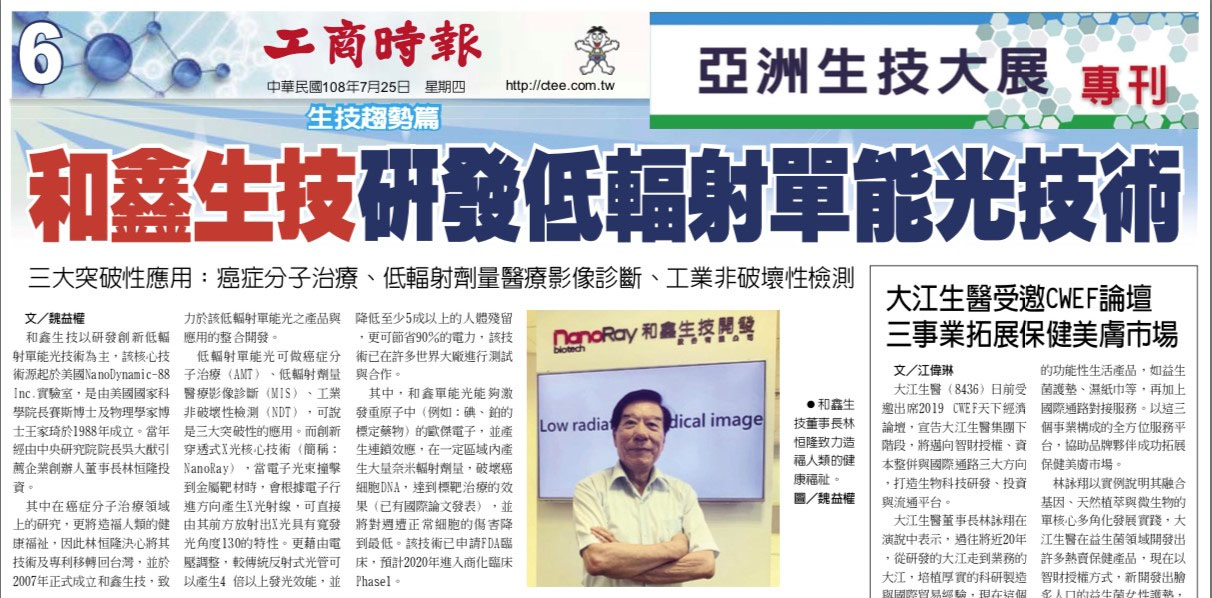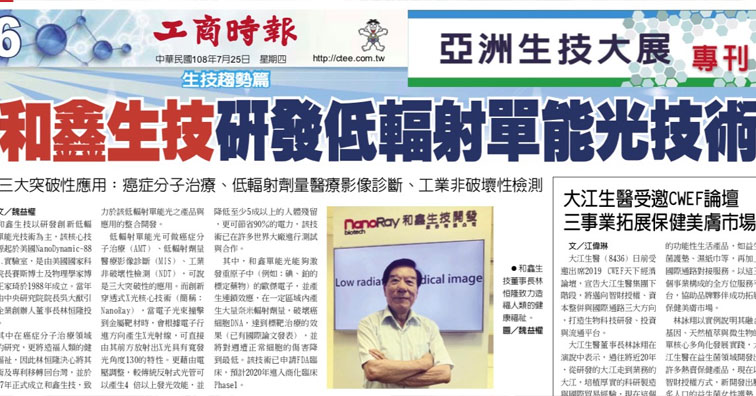Nanoray is mainly engaged in the research and development of innovative low-emission Transmission X-ray technology. This core technology originated from the NanoDynamic-88 Inc. laboratory in the United States. It was founded by Dr. Seitz, the National Academy of Sciences, and Dr. C.G Wang, a physicist in 1988. In that year, Henry Lin, the founder and chairman of the company, was introduced by the Dean of Academia Sinica Wu Ta-you. Among them, research in the field of cancer molecular therapy will benefit human health and well-being. Therefore, Henry Lin was determined to transfer the technology and patents back to Taiwan. Nanoray was formally established in 2007 and was committed to the integrated development of low-radiation single-energy light products and applications.
low-emission Transmission X-ray technology can be used for cancer molecular therapy (AMT), low-radiation dose medical imaging diagnosis (MIS), and industrial non-destructive detection (NDT), which can be said to be three major breakthrough applications. The innovative transmissive X-ray core technology (abbreviation: NanoRay), when an electron beam hits a metal target, X-rays are generated according to the direction of electron travel, and the X-rays can be emitted directly from the front with a wide luminous angle of 130 ° Characteristics. Through voltage adjustment, it can produce 4 times more luminous efficacy than traditional reflective light pipes, reduce human residue by more than 50%, and save 90% of electricity.
Among them, Nanoray Transmission X-ray can excite Auger electrons in heavy atoms (such as iodine and platinum calibration drugs), and produce a chain effect, generating a large amount of nanometer radiation dose in a certain area, destroying the DNA of cancer cells and reaching the standard The effect of target therapy (an international paper has been published and the damage to surrounding normal cells is minimized. The technology has been applied for FDA clinical trials and it is expected to enter the commercial clinical Phase1 in 2020.


